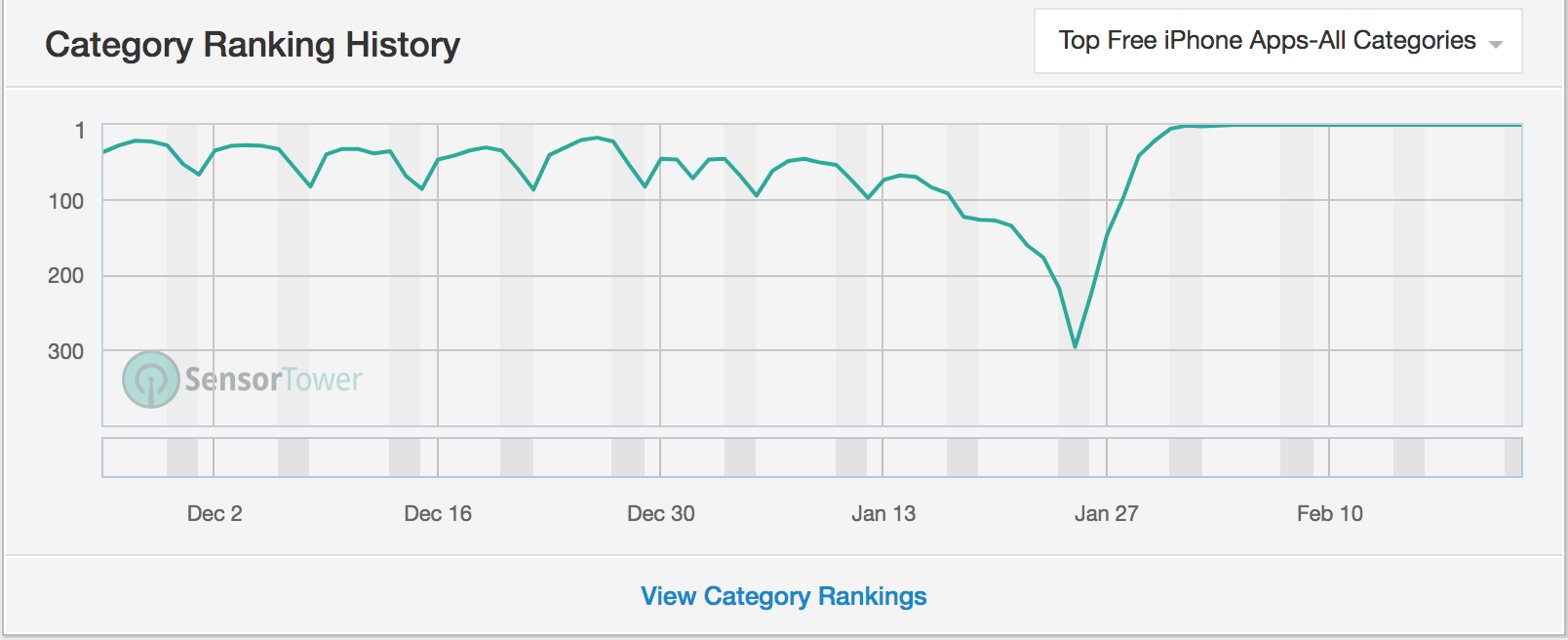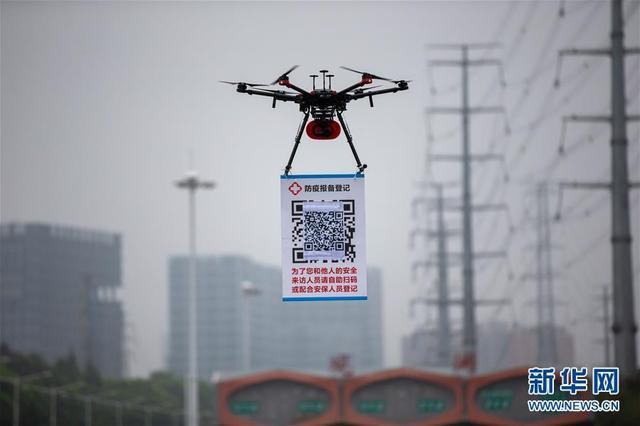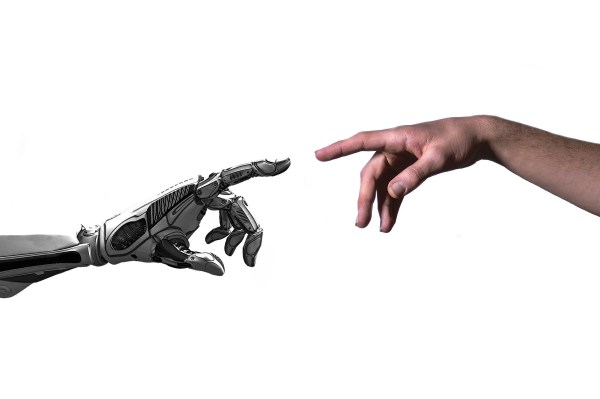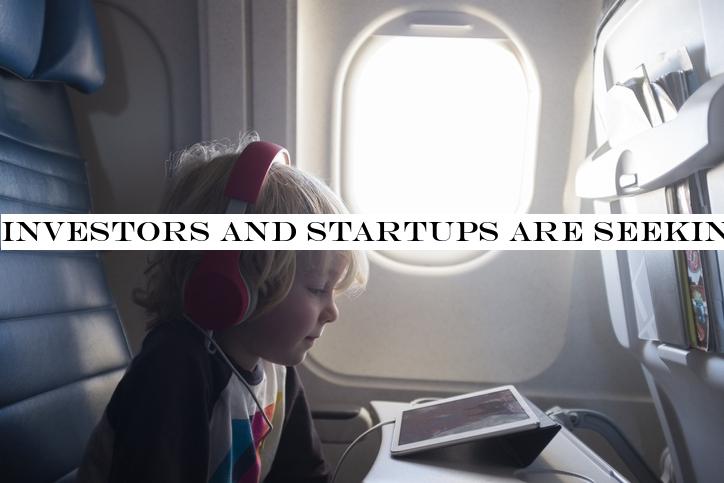Music
Trailers
DailyVideos
India
Pakistan
Afghanistan
Bangladesh
Srilanka
Nepal
Thailand
StockMarket
Business
Technology
Startup
Trending Videos
Coupons
Football
Search
Download App in Playstore
Download App
Best Collections
Technology

Rallyhood says it&private and secure.& But for some time, it wasn&t.
The social network designed to help groups communicate and coordinate left one of its cloud storage buckets containing user data open and exposed. The bucket, hosted on Amazon Web Services (AWS), was not protected with a password, allowing anyone who knew the easily-guessable web address access to a decadeworth of user files.
Rallyhood boasts users from Girl Scout and Boy Scout troops, and Komen, Habitat for Humanities, and YMCA factions. The company also hosts thousands of smaller groups, like local bands, sports teams, art clubs, and organizing committees. Many flocked to the site after Rallyhood said it would help migrate users from Yahoo Groups, after Verizon (which also owns TechCrunch) said it would shut down the discussion forum site last year.
The bucket contained group data as far back to 2011 up to and including last month. In total, the bucket contained 4.1 terabytes of uploaded files, representing millions of users& files.
Some of the files we reviewed contained sensitive data, like shared password lists and contracts or other permission slips and agreements. The documents also included non-disclosure agreements and other files that were not intended to be public.
Where we could identify contact information of users whose information was exposed, TechCrunch reached out to verify the authenticity of the data.
A security researcher who goes by the handle Timeless found the exposed bucket and informed TechCrunch, so that the bucket and its files could be secured.
When reached, Rallyhood chief technology officer Chris Alderson initially claimed that the bucket was for &testing& and that all user data was stored &in a highly secured bucket,& but later admitted that during a migration project, &there was a brief period when permissions were mistakenly left open.&
Itnot known if Rallyhood plans to warn its users and customers of the security lapse. At the time of writing, Rallyhood has made no statement on its website or any of its social media profiles of the incident.
- Details
- Category: Technology Today
Read more: Rallyhood exposed a decade of users’ private data
Write comment (90 Comments)Hello and welcome back toTechCrunchChina Roundup, a digest of recent events shaping the Chinese tech landscape and what they mean to people in the rest of the world. The coronavirus outbreak is posing a devastating impact on peoplelife and the economy in China, but therea silver lining that the epidemic might have benefited a few players in the technology industry as the population remains indoors.
The SARS (severe acute respiratory syndrome) virus that infected thousands and killed hundreds in China back in 2002 is widely seen as a catalyst for the countryfledgling e-commerce industry. People staying indoors to avoid contracting the deadly virus flocked to shop online. AlibabaTaobao, an eBay-like digital marketplace, notably launched at the height of the SARS outbreak.
&Although it sickened thousands and killed almost eight hundred people, the outbreak had a curiously beneficial impact on the Chinese internet sector, including Alibaba,& wrote China internet expert Duncan Clark in his biography of Alibaba founder Jack Ma.
Nearly two decades later, as the coronavirus outbreak sends dozens of Chinese cities into various kinds of lockdown, tech giants are again responding to fill consumers& needs amid the crisis. Others are providing digital tools to help citizens and the government battle the disease.
According to data from analytics company QuestMobile, Chinese peopleaverage time spent on the mobile internet climbed from 6.1 hours a day in January, to 6.8 hours a day during Chinese New Year, to an astounding daily usage of 7.3 hours post-holiday as businesses delay returning to the office or resuming on-premises operation.
Herea look at what some of them are offering.
Remote work apps: Boom and crash
Chinaenterprise software industry has been slow to take off in comparison to the West, though itslowly picking up steam as the countryconsumer-facing industry becomes crowded, prompting investors and tech behemoths to bet on more business-oriented services. Now remote work apps are witnessing a boom as millions are confined to working from home.
The online education sector is experiencing a similar uptick as schools nationwide are suspended, according to data from research firm Sensor Tower.

The main players trying to tap the nationwide work-from-home practice are AlibabaDingTalk, TencentWeChat Work, and ByteDanceLark. App rankings compiled by Sensor Tower show that all three apps experienced significant year-over-year growth in downloads from January 22 through February 20, though their user bases vary greatly:
DingTalk:1,446%
Lark: 6,085%
WeChat Work: 572%
DingTalk, launched in 2014 by an Alibaba team after its failed attempt to take on WeChat, shot up to the most-downloaded free iOS app in China in early February. The app claimed in August that more than 10 million enterprises and over 200 million individual users had registered on its platform.

Dingtalk became Chinamost-downloaded free iOS app mid the coronavirus outbreak. Data: Sensor Tower
WeChatenterprise version WeChat Work, born in 2016, trailed closely behind DingTalk, rising tosecond place among free iOS apps in the same period. In December, WeChat Work announced it had logged more than 2.5 million enterprises and some 60 million active users.
Lark, launched only in 2019, pales in comparison to its two predecessors, hovering around the 300th mark in early February. Nonetheless, Lark appears to be making a big user acquisition push recently by placing ads on its sibling Douyin, TikTokChina version. Douyin has emerged as a marketing darling as advertisers rush to embrace vertical, short videos, and Lark can certainly benefit from exposure on the red-hot app. WeChat, despite its colossal one-billion monthly user base, has remained restrained in ad monetization.
The question is whether the sudden boom will develop into a sustainable growth trend for these apps. System crashes on DingTalk and WeChat Work due to user influx at the start of the remote working regime might suggest that neither had projected such traffic volumes on its growth curve.After all, most businesses are expected to resume in-person communication when safety conditions are ensured.
Indeed, the work-from-home model has been widely ill-received by employees who are frustrated with intrusive company rules like &keep your webcam on while working from home.& In a more unexpected turn, DingTalk suffered from abacklash after it added tools to host online classes for students. Resentful that the app had spoiled their extended holiday, young users flooded to give DingTalk one-star ratings.
Face mask algorithms
To curb the spread of the virus, local governments in China have mandated people to wear masks in public, posing a potential challenge to the countryomnipresent facial recognition-powered identity checks. But the technologies necessary to handle the situation is already in place, such as iris scanning.
Travelers whom I spoke to reported they are now able to pass through train station security without taking their masks off — which could sound an alarm to privacy-conscious individuals. But itunclear whether the change is due to more advanced forms of biometrics technologies or that the authority had temporarily loosened security on low-risk individuals. People still have to scan their ID cards before getting their biometrics verified and travelers whose identities have been flagged could trigger stricter screening, people familiar with ChinaAI industry told me. They added that the latter case is more probable, for it will take time to implement a nationwide infrastructure upgrade.
Digital passes
Local governments have also introduced tools for people to attain digital records of their travel history, which has become some sort of permit to go about their daily life, be it returning to work, their apartment, or even the city they live in.
One example is web-based app Close Contact Detector developed by a state-owned company. Users can obtain a record of their travel history by opting to submit their names, ID numbers and phone numbers. So far the app has drawn more scorn than praise for containing the virus, bringing people to the questions: If the government already has a grip on peopletravel history, why didn&t it react earlier to restrict the free flow of travelers? Why did it only introduce the service a few weeks after the first big outbreak?
All of this could point to the challenge of collecting and consolidating citizen data across departments and regions, despite Chinaongoing efforts to encourage the use of social credits nationwide through the use of real-name registration and big data. The health crisis appears to have accelerated this data-unification process. The pressing question is how the government will utilize these data following the outbreak.
Many of these digital permits are powered by WeChat on the merit of the messengerubiquity and broad-ranging functions in Chinese society. In Shenzhen, where WeChatparent Tencent is headquartered, cars can only enter the city after the drivers use WeChat to scan a QR code hung by a drone — for the obvious reason to avoid contact with checkpoint officers — and digitally file their travel history.

Photo: Xinhua News
Citizen reporting
As the fast-spreading virus fuels rumors, individual citizens are playing an active role in combating misinformation. Dxy.cn (丁香园), an online community targeting medical professionals, responded swiftly with a fact-checking feature dedicated to the coronavirus and a national map tracking the development of the outbreak in real time.
Yikuang, the brainchild of several independent developers and app review site Sspai.com, is one of the first WeChat-based services to map neighborhoods with confirmed cases using official data from local governments.
Young citizens have also joined in. A Shanghai-based high school senior and his peerslaunched a blog that provides Chinese summaries of coronavirus coverage from news organizations around the world.
Dining and entertainment
The nationwide lockdown is almost guaranteed a boon to online entertainment. The short video sector recorded 569 million daily active users in the post-holiday period, far exceeding 492 million on a regular daily basis, shows QuestMobile. Video streaming sites are gathering musicians to virtually performand movies are premiering online as the virus forces live venues and cinemas to shut.
Many Chinese cities have gone as far as to ban eating in restaurants during the epidemic, putting the burden on food and grocery delivery services. To ensure safety, delivery companies have devised ways to avoid human interaction, such as Meituan Dianping&contactless& solution, which is in effect a self-served cabinet to temporarily store food orders awaiting customer pickup.
- Details
- Category: Technology Today
Read more: China Roundup: Amid coronavirus, tech firms offer ways to maintain China’s lifeblood
Write comment (91 Comments)
We are now onto the fifth short story of nine in Ted Chiang collection Exhalations. This one is a very short one at only a couple of pages, but despite its brief length, it explores some of the most fundamental issues facing us as a society today: technology, children, love, and the meaning of connection as all these elements fuse together. It was not my favorite story so far, but it is certainly interesting, especially in light of the previous short story Lifecycle of Software Objects (which in case you missed it, you can read more analysis here).
Some further quick notes:
- Want to join the conversation? Feel free to email me your thoughts at This email address is being protected from spambots. You need JavaScript enabled to view it. or join some of the discussions on Reddit or Twitter.
- Follow these informal book club articles here: https://techcrunch.com/book-review/. That page also has a built-in RSS feed for posts exclusively in the Book Review category, which is very low volume.
- Feel free to add your comments in our TechCrunch comments section below this post.
Reading DaceyPatent Automatic Nanny
Chiang has constructed a creative framing device here: we observe a peculiar machine — DaceyPatent Automatic Nanny — in historical retrospective within the context of an exhibit entitled &Little Defective Adults — Attitudes Toward Children 1700 to 1950.& The entire story is essentially the museum placard next to the mechanical artifact describing its background and how it was designed to raise an infant without the need for a human nanny.
Much like in the last short story we read in the collection, the question of human connection mediated by technology is at the core of the story. Can we raise a child purely through a piece of technology? Chiang seems to take a definitive stand against such a notion, showing that the childpsychosocial development is hindered by its nearly exclusive interaction with a non-human being. The author even plays a bit of a legerdemain right from the beginning: the exhibittitle of &Little Defective Adults& could be applied to robots just as much as Victorian-era children.
But like the digients in the last story, we later learn that the child at the center of the story actually has fine interaction skills, but with robots instead of humans. As the automatic nanny is removed from service after two years of raising Lionelchild Edmund, the child experiences stunted development. His development is rekindled once he has access to robots and other electronics again. Per the story:
Within a few weeks, it was apparent that Edmund was not cognitively delayed in the manner previously believed; the staff had merely lacked the appropriate means of communicating with him.
And so we are left with a continuation of the major questions from the last story: should human-robot interactions be considered equal to human-to-human interactions? If a child is more comfortable interacting with an electronic device instead of a human, is that just a sign that we privilege and value certain interactions over others?
Ita question that is expounded on much more comprehensively in Lifecycle of Software Objects, but remains just as interesting a question here in our increasingly digital world. We are about to launch a multi-part series on virtual worlds tomorrow (stay tuned), but ultimately all of these questions boil down to a fundamental one: what is real?
Outside of that theme (which veers into philosophy and isn&t deeply meditated on in the couple of pages of story here), I think there are two other threads worth pulling on. The first has to do with the variability of human experience. This whole experiment begins when Lionelown father Reginald decides to replace a human nanny with a machine to provide a more consistent environment for his child (&It will not expose your child to disreputable influences&). Indeed, he doesn&t just want that consistency for his own child, but wants to clone the automatic nanny for all children.
Yet while Reginald feels that human nannies are defective, it is really the automatic nannies themselves that are impoverished. They lack the spontaneity and complexity of human beings, preventing the children in their care from handling a wider variety of situations and instead pushing them inward. Indeed, women (aka mothers) intuitively understand this dynamic: &The inventor [Reginald] framed his proposal as an invitation to partake in a grand scientific undertaking and was baffled that none of the women he courted found this an appealing prospect.&
And yet, human contact is precisely what drives the continued pursuit of these robots in the first place. The nannyoriginal inventor, Reginald, uses it on his own son Lionel, who wants to prove their utility to the world by using it on his son Edmund. So we see a multi-generational pursuit of this dream, but that pursuit is driven by the human passion to defend the work of oneparents and the legacy they leave behind. Human-to-human contact then becomes the key driver to prove human-to-robot contact is just as effective, debunking the very claim under consideration in the process. Ita beautiful bit of irony.
The other thread to untangle a bit is the scientific method and how far astray it can lead us. Reginaldcreation and marketing of the device is undermined by the fact that he never really performed any real experiments on his own child to evaluate the quality of different nannies. He just makes assumptions, based on his Victorian values, and pursues them relentlessly before heading back to pure mathematics, a field where he can be at ease with his models of the universe.
In the middle of this little pattern is a common lesson: sometimes the things that are least measurable have the greatest influence on our lives. This story — like the exhibit ita depiction of — is a warning, about hubris and failing to listen and love.
The Truth of Fact, the Truth of Feeling
Some questions to think about as you read the next short story, The Truth of Fact, the Truth of Feeling:
- What is truth? What is honesty?
- How do the two frames — an historical one about the Tiv and the &contemporary& one about the remem technology — work together to interrogate what truth means?
- How important is it to get the details right about a memory? Does a compelling narrative override the need for accuracy?
- Do different cultures have different approaches to storytelling, narration, and universal truth?
- Does constantly recording photos and videos change our perception of the world? Are they adequate representations of the truth?
- How important is it to forget? Memories are supposed to fade with time — is this fundamentally conducive to humanity or harmful?
- Will we fact check each otherbehavior more and more in the future? What consequences would such a future bring?
- Details
- Category: Technology Today
Read more: How do we connect a child to technology
Write comment (98 Comments)
Understanding the opportunities available in the space industry — especially for early-stage companies and new founders — isn&t easy.
The pool of people who have deep aerospace technical expertise isn&t huge, and like any community that requires a high degree of specialist knowledge, ita tightly-knit field that relies on social connections. But space is increasingly opening up, and we&ve already reached a point where the most valuable new entrants might come from industries that aren&t specifically aerospace or aerospace-adjacent.
In fact, we could be reaching a stage where the parts of the space industry requiring actual rocket scientists are more or less saturated, while the real boon is set to come from crossover talent that develops new ways to leverage innovations in other areas on space-based operating platforms.
&We have enough low-Earth launch vehicles, we have enough rockets,& Bessemer VP Tess Hatch told me in an interview at the FAACommercial Space Transportation Conference last month. &In 2020, we have even more coming online and a lot of the ‘fantasy& ones [an industry term used to describe spacecraft that have been conceived and designed but not yet flown] are planning to launch, and I think maybe one of them will come to fruition.&
Hatch says she still sees much of the demand side of the industry cluster around existing and proven suppliers, even if new entrants, including Astra and Firefly, actually begin flying their rockets this year, as both have been planning. Companies like Rocket Lab (in which her company has a stake) will increase their volume and cadence and benefit from having a proven track record, taking up a lot of the growth in launch vehicle demand. &I don&t think thereroom for any more rockets in the industry,& she said.
Instead, Hatch is looking to payload variety and innovation as the next big thing in space tech. Satellites are becoming increasingly commoditized, and companies like Rocket Lab are looking to take this further by providing a satellite platform (Proton) as part of its launch offering. Therestill immaturity in the small-satellite supply chain, which is what led small-satellite operator Kepler to build its own, but the bigger opportunity isn&t in building satellites — itin equipping them with new, improved and radically redesigned sensors to gather new kinds of data and provide new kinds of services.
- Details
- Category: Technology Today
Read more: Sensors are the next big thing in space, not starships
Write comment (90 Comments)
As streaming services like HBO Max, Netflix and Disney+ plus vie for subscription dollars and YouTube, Xumo, Kanopy, Tubi TV, Vudu and Pluto TV try to take more ad revenue from traditional television, entertainment for kids — and the tech tools that manage their screen time — are becoming more important.
On the streaming side, Netflix has been marshaling its resources for months, poaching talent like Chris Nee, creator of the &Doc Mcstuffins& Disney Channel series, Naketha Mattocks (&The Descendants&) and Kenny Ortega (&High School Musical&) — to join its stable of creative talent. HBO Max locked in several years of &Sesame Street& shows, which will be available when its service launches in May. Finally, thereDisney+, which has racked up 28.6 million subscribers for its service as of February 3.
Recognizing the threat, ad-supported platforms are coming up with their own responses. Some of these platforms also stream the same programs that are available on the subscription services, but as exclusivity becomes more important, audiences and entertainers can expect platforms like YouTube, Facebook and others to spend more heavily on original shows that attract younger audiences.
For instance, Facebook intends to spend $1.4 billion on programming for its Facebook Watch service, according to a report in The Information.
- Details
- Category: Technology Today
Read more: Investors and startups are seeking ways to entertain and protect kids online
Write comment (94 Comments)
While a countdown clock on the Fujifilm website has made it very clear that the X-T4 is going to be officially announced on February 26, it takes a tad more digging to discover that another little shooter is also going to make its debut on the same day.
On another "special" site, as Fujifilm calls it, the camera maker is teasing the launch of its
- Details
- Category: Technology Today
Read more: Fujifilm Instax Mini 11 to be launched alongside the X-T4 on February 26
Write comment (91 Comments)Page 1379 of 1408

 8
8





